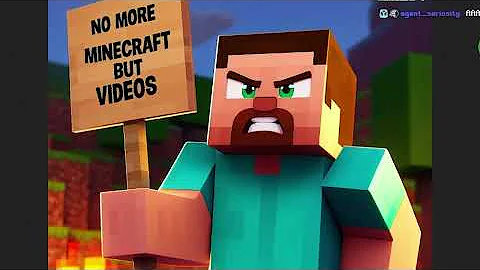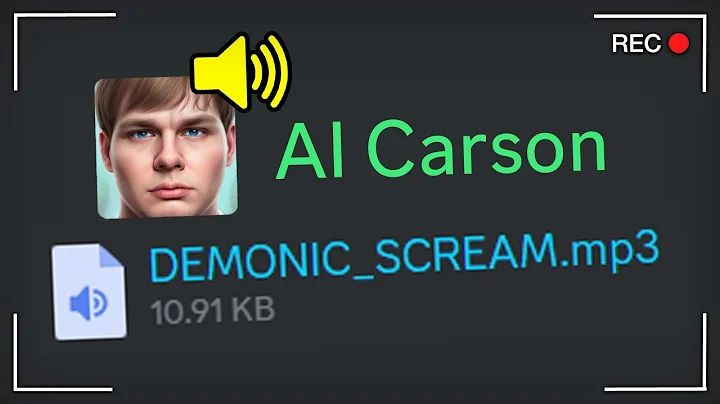Unveiling the Dark Side of AI Art: Exploiting Artists' Work Without Consent
Table of Contents:
- Introduction to AI generated art
- How AI works in creating art
- Concerns surrounding AI-generated art
3.1 Use of copyrighted data
3.2 Lack of consent and compensation for artists
3.3 Potential legal issues
3.4 Reputation damage and fraud
- The unethical practices of Stability AI
4.1 Data mining and collection of copyrighted content
4.2 Exploitation of artists' work without consent
4.3 Opt-in system vs opt-out system
- Double standard between visual art and Music industry
- Artists' rights and the need for protection
- Personal experiences and anecdotes
- Toxicity and dismissal in the AI community
- The power of artists' voices and push for change
- Conclusion and hope for an ethical future
➡️ Introduction to AI generated art
AI-generated art has become a hot topic on social media platforms recently. To comprehend the concerns surrounding this art form, it is essential to understand how AI works in creating artworks. Unlike generating art out of thin air, AI requires input in the form of data sets to generate an output. Machine learning companies like stability AI profit from high quality media by training their AI systems on specific data sets. These sets consist of visual data with statistical correlations, ultimately producing an acceptable final result. However, this process raises serious issues related to copyrights, consent, and the unregulated use of artists' work.
➡️ How AI works in creating art
When an AI system generates art, it relies on data sets to produce the final output. The data sets used in AI art creation contain billions of copyrighted images, collected from the internet without the intellectual property owners' consent. This unethical practice infringes upon artists' rights and exposes their work to unauthorized usage. Stability AI, for example, has admitted that their models use copyrighted data, which can lead to legal problems. The generated images often bear striking resemblances to the original copyrighted works, causing potential reputation damage, forgery, and fraud. This raises concerns about the future of creativity and the protection of artists' intellectual property.
➡️ Concerns surrounding AI-generated art
3.1 Use of copyrighted data
AI-generated art relies heavily on copyrighted data collected through data mining. Stability AI's lion 5B data set, the largest in use, contains 5.8 billion points of image and text data, including copyrighted content. By using copyrighted data without permission or compensation, these companies violate artists' rights and exploit their work for commercial gain.
3.2 Lack of consent and compensation for artists
Artists' work is included in AI data sets without their knowledge or consent. This non-consensual practice prevents artists from opting out of the system, denying them the right to control the use of their creations. Furthermore, artists receive no compensation for the use of their work, despite the profits generated by AI-generated art.
3.3 Potential legal issues
The use of copyrighted data in AI-generated art poses legal challenges for both the AI companies and artists. The AI models' ability to memorize and overfit data further complicates the matter. Releasing models trained on copyrighted data can result in legal consequences, as stability AI itself acknowledges.
3.4 Reputation damage and fraud
AI-generated art that closely resembles an artist's work has the potential to damage their reputation. The unregulated nature of AI art creation opens the door to forgery, fraud, and identity theft. Artists' unique touch and the individual nuances in their creations cannot be replicated by AI, making it crucial to protect their artistic legacy.
➡️ The unethical practices of stability AI
4.1 Data Mining and collection of copyrighted content
Stability AI and similar companies collect copyrighted content through data mining, accumulating an overwhelming amount of data. This practice allows them to bypass legal regulations and use copyrighted work without permission. The corporations intentionally exploit legal loopholes, enabling them to amass vast data sets containing copyrighted and private data.
4.2 Exploitation of artists' work without consent
Stability AI's unethical practices involve using artists' work without consent or compensation. By scraping images from the internet, stability AI incorporates artists' creations into their AI models, profiting from the resulting AI-generated art. This exploitation and lack of respect for artists' rights constitute an industry-wide violation.
4.3 Opt-in system vs opt-out system
The current system of including artists' work in AI models automatically without their permission or knowledge is fundamentally flawed. Artists should have the choice to opt into the system rather than being forced into it. An opt-in system would prioritize artists' consent and protect their rights from being trampled on.
➡️ Double standard between visual art and music industry
Visual art and music are both integral parts of our culture, yet there exists a notable double standard in how their copyrights are treated. In the music industry, AI models are created using copyright-free data, with an emphasis on respecting the rights of music artists. However, the same standard is not applied to visual artists, leading to an unfair and unethical system that disregards their rights and creations.
➡️ Artists' rights and the need for protection
Artists' rights should be protected and respected in the world of AI-generated art. Just like musicians, visual artists invest their time, passion, and creativity in their work. They deserve proper attribution, consent, and compensation for the use of their creations in AI models. Failure to protect artists' rights diminishes their value, discourages creativity, and perpetuates an unethical system that prioritizes corporate profit over artistic integrity.
➡️ Personal experiences and anecdotes
The impact of AI-generated art can be deeply personal and damaging for artists. Instances of artists' work being used without consent and circulated in AI communities have emerged. Artists who voice their concerns face backlash and even harassment from AI enthusiasts. Toxicity within the community highlights the need for awareness and change to create a more ethical and respectful environment for artists.
➡️ The power of artists' voices and push for change
Despite the challenges, artists have the power to make a difference. By raising awareness, educating others, and advocating for ethical practices, artists can bring about change in the AI-generated art industry. Platforms like deviantART have already seen the reversal of decisions due to artists' pushback. It is crucial for artists to unite and use their voices to create a future that respects their rights and ensures a fair and ethical landscape for all.
➡️ Conclusion and hope for an ethical future
In conclusion, AI-generated art has brought attention to significant concerns regarding artists' rights, copyright infringement, and ethical practices. While AI technology itself may be inevitable, the current system needs to change. The exploitation of artists' work without consent or compensation must be addressed. Artists, along with their supporters, have the power to Shape the future of AI-generated art into one that values creativity, respects intellectual property, and provides a fair and ethical environment for artists to thrive.
⭐ Highlights
- AI-generated art raises concerns about copyrights, consent, and the unregulated use of artists' work.
- Stability AI and similar companies Collect copyrighted content without permission, leading to legal and ethical issues.
- AI-generated art resembling an artist's work can cause reputation damage, forgery, and fraud.
- The unethical practices of stability AI exploit artists' work without their consent or compensation.
- Visual artists deserve the same rights and protections as music artists in relation to AI-generated art.
- Personal experiences highlight the toxicity within the AI community and the need for change.
- Artists have the power to bring about change by raising awareness and advocating for ethical practices.
FAQ:
Q: Is AI-generated art a violation of artists' rights?
A: Yes, AI-generated art often uses copyrighted material without the artists' consent, violating their rights and potentially causing reputational harm.
Q: Can artists opt out of having their work used in AI models?
A: Currently, artists have no option to opt out, as their work is automatically included in AI models without their consent.
Q: What are the potential consequences of using copyrighted content in AI-generated art?
A: Using copyrighted content without permission can lead to legal issues, reputation damage, forgery, fraud, and identity theft.
Q: How can artists protect their rights in the world of AI-generated art?
A: Artists can raise awareness, advocate for ethical practices, and push for regulations that protect their rights and ensure fair compensation for the use of their work.
Q: Is there hope for change in the AI-generated art industry?
A: Yes, artists have the power to bring about change by voicing their concerns, educating others, and creating a future that respects their rights and promotes ethical practices.
Resources:
- Steven Zapata's video on AI-generated art: Link
- DeviantART's response to opt-out system: Link



























